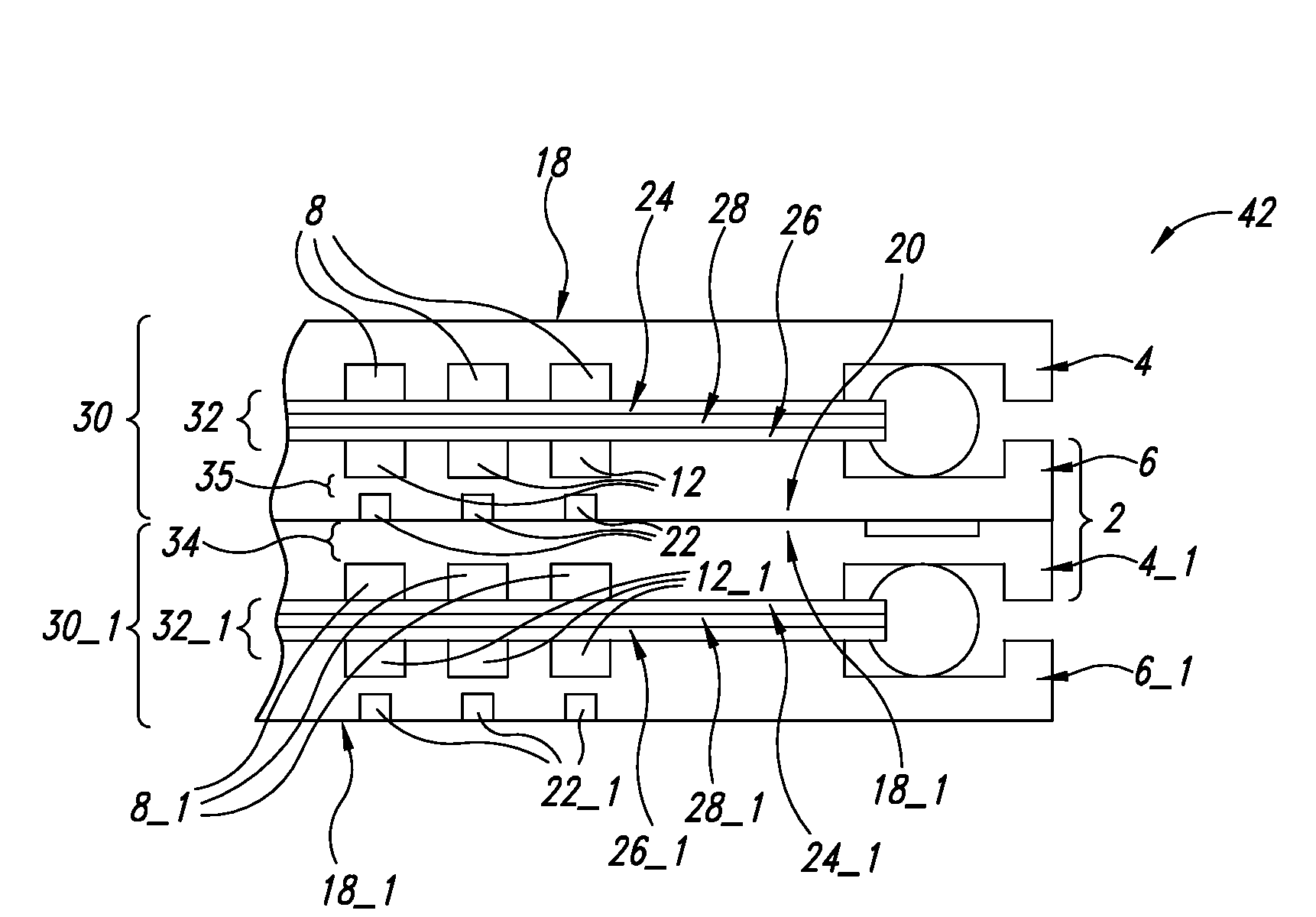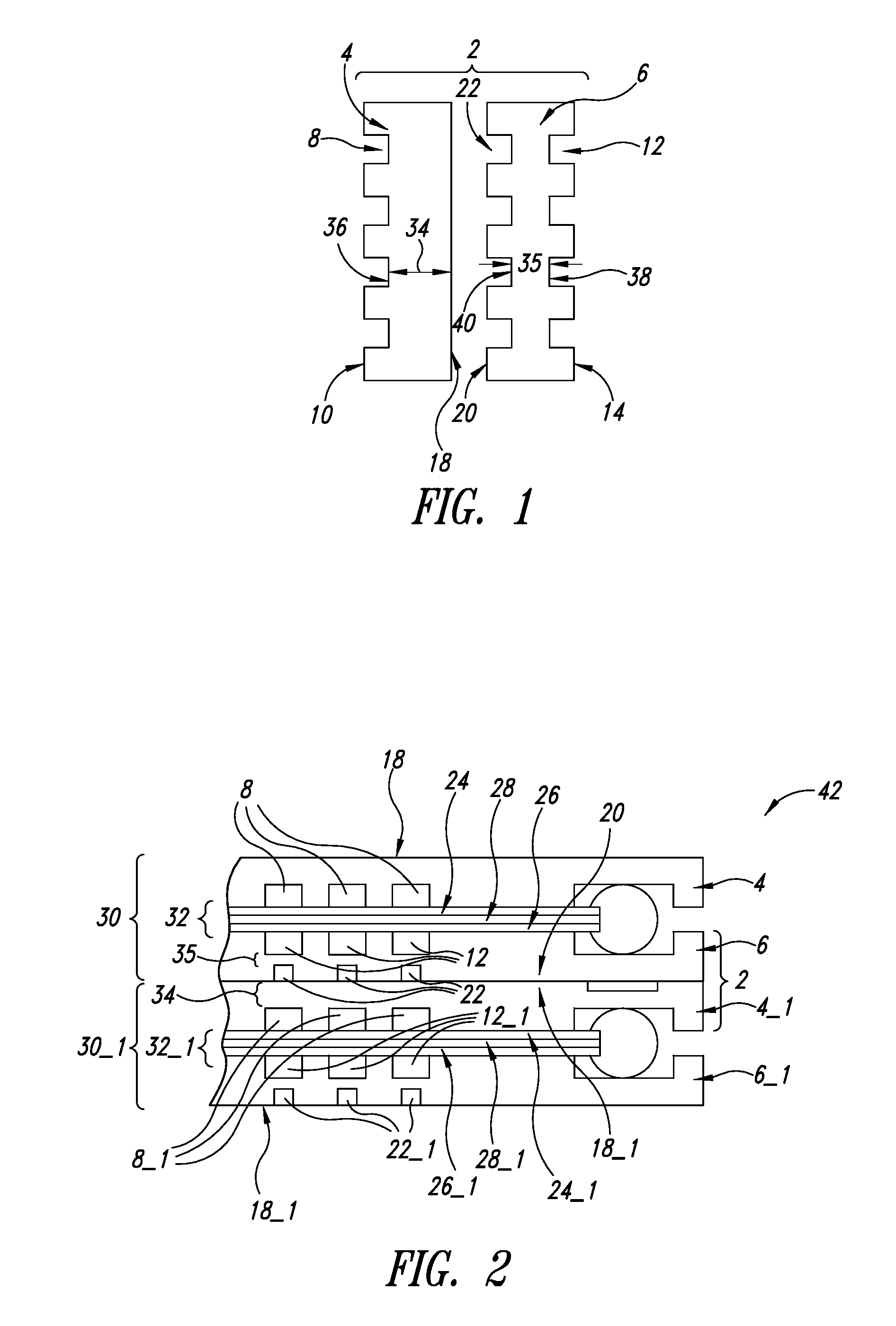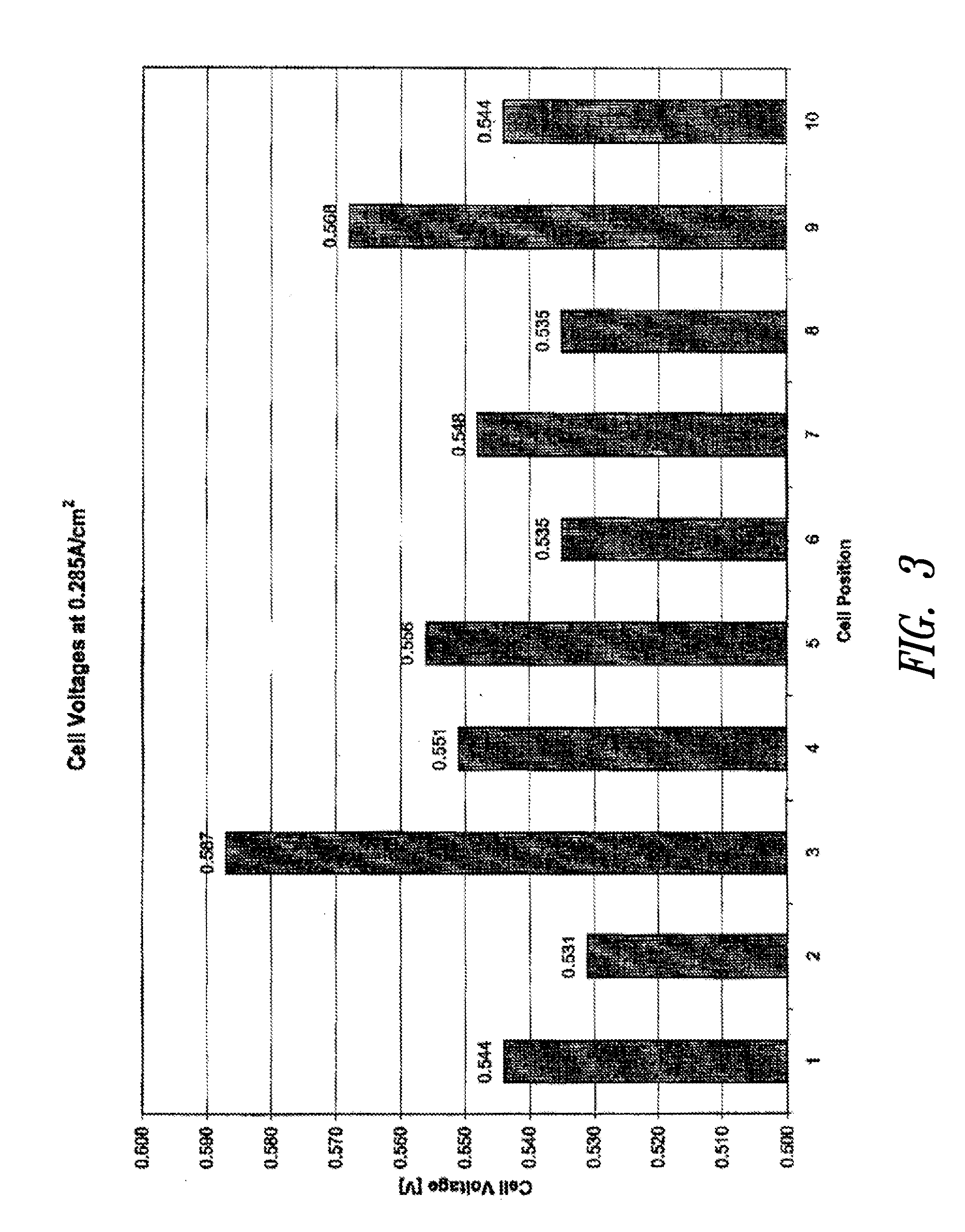Method of operating a fuel cell stack at low pressure and low power conditions
- Summary
- Abstract
- Description
- Claims
- Application Information
AI Technical Summary
Benefits of technology
Problems solved by technology
Method used
Image
Examples
example
[0041]Two 10-cell fuel cell stacks were tested under the following conditions: diluted fuel (74% hydrogen, 20% carbon dioxide, 6% nitrogen) was supplied to the anode at a pressure of 17.2 kPag, a humidification temperature of 57° C. and a stoichiometry of 1.25, while air was supplied to the cathode at a pressure of 10.7 kPag, a humidification temperature of 57° C. and a stoichiometry of 2.0. The anode flow fields of both stacks had a pressure drop of 120 mbar while the cathode flow fields of both stacks had a pressure drop of 100 mbar. The anode flow field plate web thickness of the anode flow field plates in the first stack was 1.88-millimeters, while the anode flow field plate web thickness of the anode flow field plates in the second stack was 3.6-millimeters. Both stacks were operated at 0.285 A / cm2 for about 15 minutes.
[0042]FIG. 3 shows the average performance of each fuel cell in the first 10-cell stack comprising 1.88-millimeter web thickness anode flow field plates. The ave...
PUM
 Login to View More
Login to View More Abstract
Description
Claims
Application Information
 Login to View More
Login to View More - R&D
- Intellectual Property
- Life Sciences
- Materials
- Tech Scout
- Unparalleled Data Quality
- Higher Quality Content
- 60% Fewer Hallucinations
Browse by: Latest US Patents, China's latest patents, Technical Efficacy Thesaurus, Application Domain, Technology Topic, Popular Technical Reports.
© 2025 PatSnap. All rights reserved.Legal|Privacy policy|Modern Slavery Act Transparency Statement|Sitemap|About US| Contact US: help@patsnap.com



